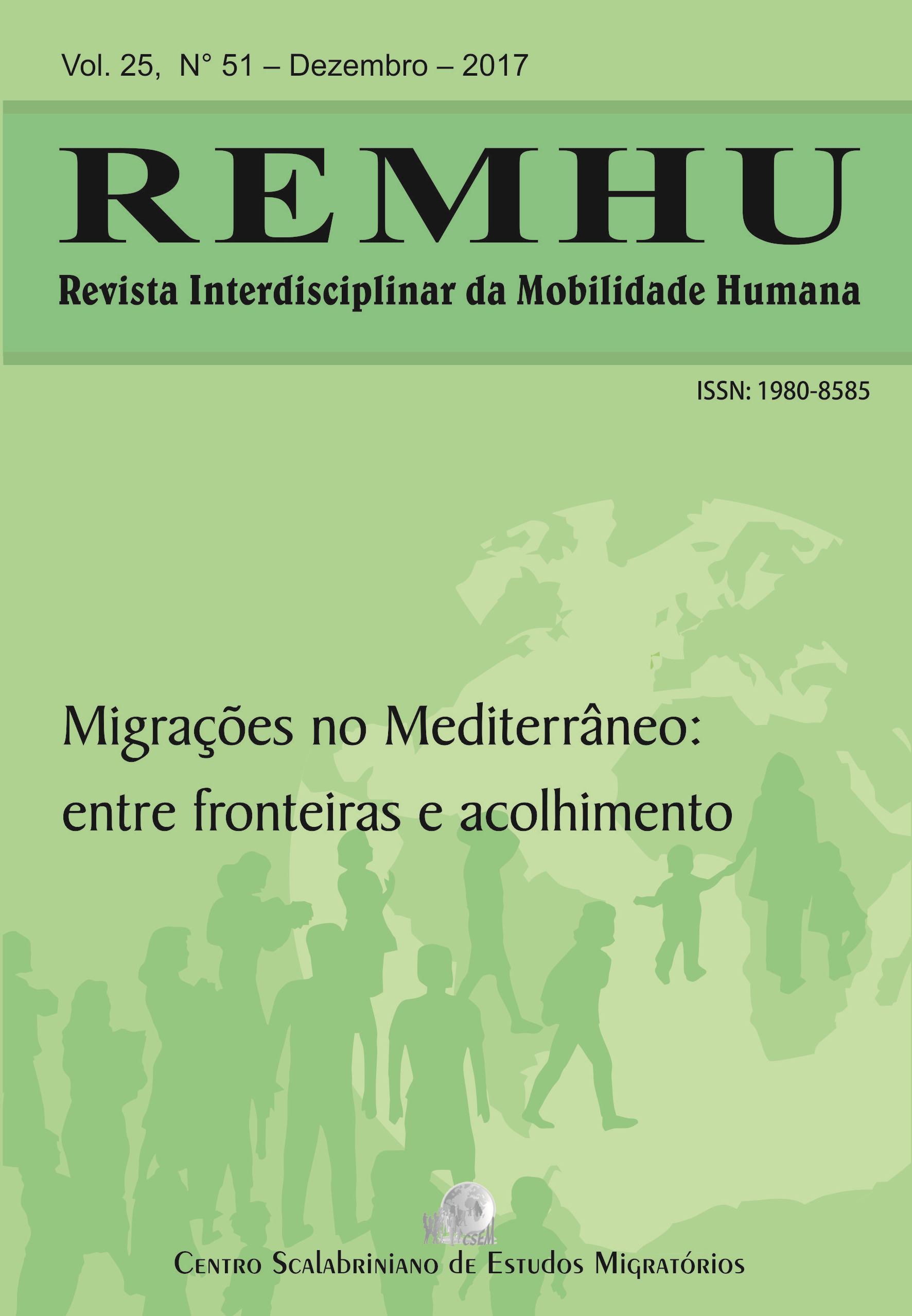The third way. Humanitarian corridors in peacetime as a (local) civil society response to a EU’s common failure
DOI:
https://doi.org/10.1590/1980-85852503880005105Keywords:
Humanitarian Corridor, Migration, Refugees, Innovative practiceAbstract
Migration has been and will continue to be one of the key issues for Europe in the coming decades. Fundamental developments such as economy, climate change, globalization of transport and communication, war and instability in the neighbouring regions, are all factors that continue to drive people to come to Europe, in search of shelter and a better life or to reunite with their families. In recent years, vulnerability of forced migrants has been exacerbated by worsening conflicts in their home country, which make repatriation less and less a viable option, and by mounting intolerance within local communities. A growing number of potential refugees attempts to escape transit countries to reach the European Union by embarking in dangerous journeys to cross the Mediterranean Sea and illegally enter the European Union. Within the European Union resettlement represents a 'durable solution' for vulnerable forced migrants alongside local integration and voluntary repatriation, a protection tool for potential people whose lives and liberty are at risk. In Italy, a group of institutions from civil society and the Italian Ministries of Foreign Affairs and of Interior signed a Protocol of Agreement for the establishment of Humanitarian Corridors to ensure the legal and safe resettlement of asylum seekers. Our article will show how these Humanitarian Corridors proved to be a successful multi-stakeholder engagement to support safe and legal pathways to protection as well as durable solutions for third country nationals in need of protection.
Downloads
Published
Issue
Section
License
Authors retain the copyright and grant the journal the right of first publication, with the work simultaneously licensed under the Licença Creative Commons do tipo atribuição BY that allows the sharing of the work with recognition of authorship and initial publication in this journal.
Authors are permitted to to self-archive their published manuscripts by posting them in personal blogs, institutional repositories and scientific social media, as well as on their personal social media, as long as the full citation of the original publication is included.




